20 Essential Tips for First-Timers Traveling to London Travel
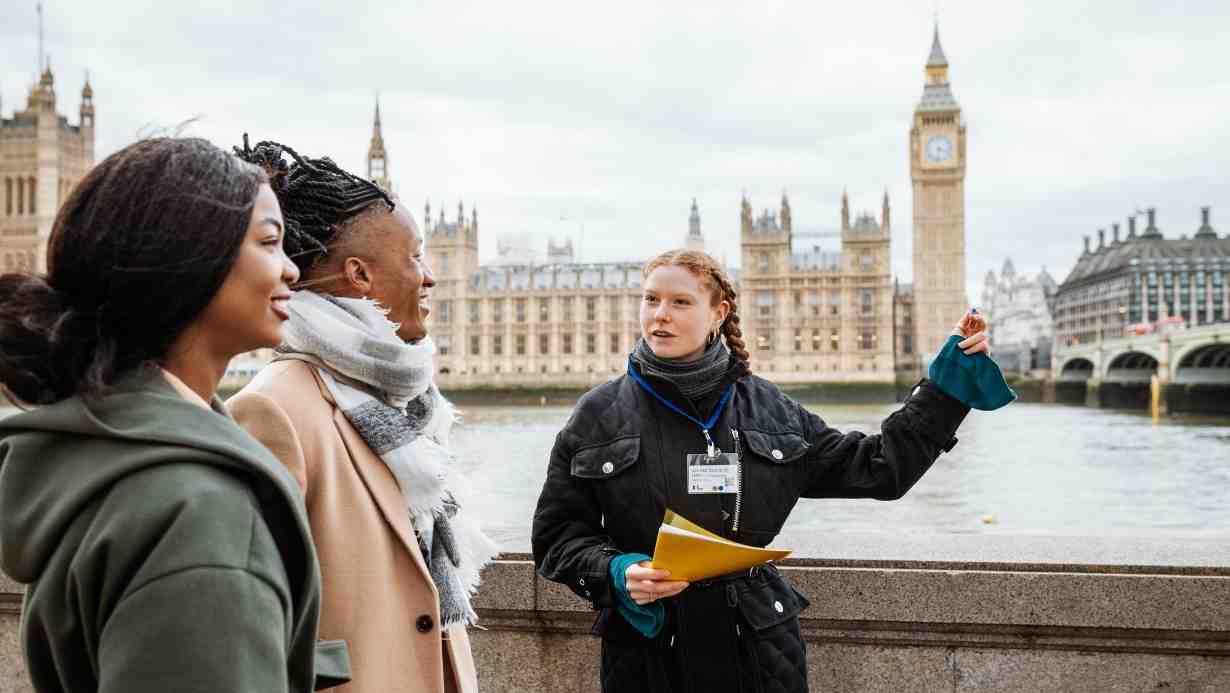
About London Tourism
London, a global metropolis brimming with history, culture, and iconic landmarks, is a dream destination for tourists. From the majestic Tower of London to the vibrant West End theaters, this city offers a diverse range of experiences. Visitors can stroll through centuries-old museums, savor traditional afternoon tea, and explore hidden mews streets.
London’s extensive public transportation system ensures that even the city’s hidden gems are easily accessible. Diverse neighborhoods, each with its unique character, beckon travelers to immerse themselves in the local culture.
Whether you’re seeking world-class art, British history, or culinary delights, London welcomes you with open arms, promising a journey of discovery and unforgettable memories.
1. Planning Your Trip
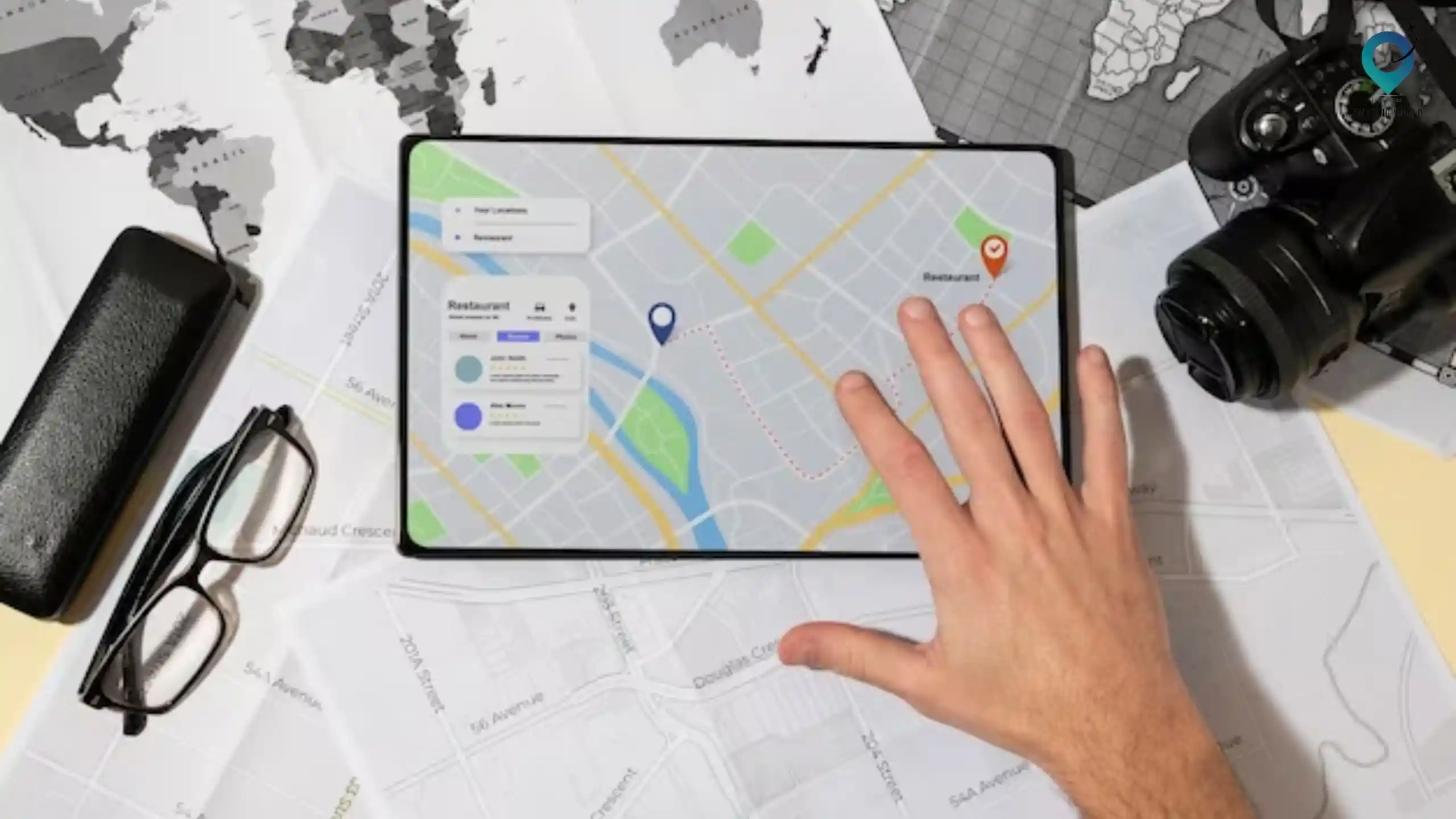
Importance of Planning Ahead
Planning a trip to London is an exciting endeavor, and to make the most of your visit, it’s crucial to plan ahead. Here’s why this step is so important:
- Avoid Disappointment: Popular attractions in London can get crowded, and without proper planning, you might miss out on experiences you’ve been looking forward to. Booking tickets in advance, creating an itinerary, and making reservations can help you avoid disappointment.
- Budget Management: Planning ahead allows you to set a budget and find deals and discounts on accommodations, transportation, and attractions. It also gives you time to save for your trip, ensuring you have enough funds for the experiences you desire.
- Time Optimization: London has so much to offer that it’s easy to be overwhelmed. Careful planning helps you optimize your time by scheduling visits to nearby attractions, so you’re not crisscrossing the city unnecessarily.
- Adapting to Your Interests: Everyone’s interests are unique. Some may be drawn to historical sites, while others prefer art or shopping. Planning your trip allows you to tailor your experience to your interests, ensuring a more satisfying visit.
Tips for Choosing the Best Time to Visit
London’s climate and cultural calendar can significantly impact your experience. Here are some tips for choosing the best time to visit:
- Weather Considerations: London’s weather is famously unpredictable. Summers (June to August) offer pleasant temperatures, but it can be crowded. Spring (March to May) and early autumn (September to October) can provide milder weather and fewer tourists. Winters (November to February) are less crowded but can be chilly and rainy.
- Special Events and Festivals: Research local events and festivals. For example, if you’re a fan of theater, consider visiting during the West End’s theater season. The Notting Hill Carnival in August and the Thames Festival in September are vibrant celebrations worth experiencing.
- Avoiding Peak Tourist Seasons: London tends to be busiest during the summer and around major holidays. If you prefer a more relaxed experience, consider traveling during the shoulder seasons (spring and early autumn).
- Museum and Gallery Closures: Some museums and galleries may close for maintenance or renovation during certain times of the year. Be sure to check their schedules before your visit to avoid disappointment.
- Daylight Hours: Consider the daylight hours available during your visit. Longer days in summer provide more time for sightseeing, while shorter days in winter may require adjusted itineraries.
Planning your trip to London is a rewarding experience in itself. By thinking ahead, you can maximize your enjoyment and ensure that your visit is filled with the experiences that matter most to you. Whether you’re a history buff, an art connoisseur, a foodie, or a fashion enthusiast, London has something to offer, and thoughtful planning will help you make the most of it.
2. Accommodation

London is a city that caters to a wide range of travelers, from budget-conscious backpackers to luxury seekers. Choosing the right accommodation is a critical part of planning your trip. Here are some key considerations and tips to help you find the perfect place to stay:
Recommendations for Different Budget Levels
London’s accommodation options are as diverse as the city itself. Whether you’re looking for a luxurious stay, a cozy bed and breakfast, or a budget-friendly hostel, you’ll find something that suits your preferences and budget. Consider the following:
- Luxury Hotels: London boasts some of the world’s most opulent and historic hotels. If you’re looking for a lavish experience, you can choose from iconic establishments like The Ritz, The Savoy, or Claridge’s.
- Mid-Range Hotels: There are plenty of mid-range options that offer a comfortable stay without breaking the bank. These hotels often include amenities such as free Wi-Fi, breakfast, and convenient locations.
- Bed and Breakfasts: Staying in a cozy bed and breakfast can provide a more intimate experience. You’ll often have a chance to interact with the hosts and get personalized recommendations.
- Hostels and Budget Accommodations: London has a variety of hostels and budget-friendly accommodations that cater to backpackers and cost-conscious travelers. These options are perfect for those who want to spend more on experiences and less on lodging.
Tips for Booking Accommodations in Advance
- Book Early: London is a popular tourist destination, and accommodations can fill up quickly, especially during peak seasons. Booking your accommodation well in advance ensures you have a wider selection to choose from.
- Consider Location: Think about the neighborhoods you want to explore and choose accommodation accordingly. Central London locations like Westminster, Covent Garden, and Kensington offer easy access to major attractions.
- Read Reviews: Use reputable travel websites to read reviews and gain insights from previous guests. This can help you make an informed decision about the quality and service of the accommodation.
- Cancellation Policies: Check the cancellation policies before booking. Life can be unpredictable, and having a flexible cancellation policy can provide peace of mind.
- Amenities and Inclusions: Pay attention to what’s included with your stay. Some hotels offer breakfast, Wi-Fi, or even access to a gym or spa. Assess which inclusions are important to you.
- Consider Alternative Options: London also has vacation rentals, serviced apartments, and unique lodging options like houseboats on the Thames. These can provide a more personalized experience.
Your choice of accommodation can significantly impact your London experience. It’s essential to balance your budget and preferences with location and the services you require. By planning your accommodation well in advance and considering these recommendations, you can ensure a comfortable and enjoyable stay in London.
3. Transportation
Getting around London efficiently is a key aspect of your trip planning. London’s comprehensive transportation system ensures that you can easily explore the city’s many attractions. In this section, we’ll provide an overview of the transportation options in London and offer tips on using the London Underground and buses.
Transportation Options in London
London’s transportation network is renowned for its extensive coverage and accessibility. Here are the primary modes of transportation to consider:
- London Underground (The Tube): The London Underground is one of the most iconic subway systems in the world. With its network of 11 lines, it connects almost every part of the city. The Tube is fast, reliable, and a popular choice for navigating London.
- Buses: London’s iconic red double-decker buses are not only a convenient mode of transportation but also offer great sightseeing opportunities. With extensive routes covering the city, buses complement the Tube network.
- London Overground: This suburban train system connects neighborhoods and provides access to areas outside central London.
- Trams: Trams serve some areas in South London, making them a convenient choice for those staying in that part of the city.
- Docklands Light Railway (DLR): This driverless light rail system serves the Docklands area, connecting with the Tube and offering a unique perspective of the city’s modern architecture.
- Taxis and Rideshares: Black cabs and rideshare services like Uber are widely available for those who prefer door-to-door service.
- Cycling: London’s bike-sharing scheme, known as Santander Cycles, allows you to explore the city on two wheels. There are dedicated cycle lanes and paths throughout London.
- Walking: London is a pedestrian-friendly city, and many attractions are within walking distance of each other, especially in central London.
- River Services: The River Thames flows through the heart of London, and you can use river buses and cruises to explore some of the city’s famous landmarks from the water.
Tips for Using the London Underground and Buses
- Oyster Card or Contactless Payment: To make your journeys more convenient and economical, consider getting an Oyster card or using contactless payment methods. These options offer reduced fares compared to paper tickets.
- Tube Map and Bus Routes: Familiarize yourself with the London Tube map and bus routes. Understanding the network will help you plan your journeys effectively.
- Travel During Off-Peak Hours: If your schedule allows, try to travel during off-peak hours to avoid the crowds. Peak times are typically during rush hours in the morning and late afternoon.
- Mind the Gap: While using the Tube, you’ll often hear the famous “Mind the gap” announcement. This serves as a reminder to watch your step when entering or exiting the train.
- Travelcards: If you plan on using public transportation frequently during your visit, consider purchasing a Travelcard. It provides unlimited travel within certain zones for a fixed period.
- Bus Stops and Timetables: Bus stops are clearly marked, and timetables are available. Make use of apps and online resources to check bus schedules and routes.
- Accessible Travel: London’s transportation system is continually improving its accessibility for people with disabilities. Many stations and vehicles are equipped with facilities to accommodate travelers with special needs.
Understanding London’s transportation options and how to use them efficiently will enhance your mobility and overall experience in the city. The Tube and buses are the backbone of the system, providing access to the majority of London’s attractions and neighborhoods. With the right knowledge and planning, you’ll navigate the city like a local.
4. Sightseeing

London is a treasure trove of iconic attractions and landmarks, each with its own unique charm and historical significance. In this section, we’ll highlight some of the must-visit attractions in the city and provide tips on how to avoid crowds and save time during your explorations.
List Must-Visit Attractions in London
London is a city that effortlessly blends its rich history with contemporary culture. Here are some of the must-visit attractions that should be on your itinerary:
- The British Museum: Home to an incredible collection of art and artifacts from around the world, this museum is a testament to human history and civilization.
- The Tower of London: A historic castle on the banks of the River Thames, the Tower of London is famous for its role in British history, as well as the Crown Jewels on display.
- Westminster Abbey: This magnificent Gothic church is not only a place of worship but also the site of royal coronations and other important events.
- Buckingham Palace: The official residence of the British monarch, Buckingham Palace is a symbol of royal elegance and hosts the Changing of the Guard ceremony.
- The Houses of Parliament and Big Ben: These landmarks along the River Thames are architectural marvels and key symbols of London.
- The Shard: Offering stunning panoramic views of the city, The Shard is Western Europe’s tallest building.
- The Tate Modern: This modern art museum, housed in a former power station, showcases contemporary artworks from around the world.
- The Natural History Museum: A family-friendly attraction, this museum features fascinating exhibits on natural history, including dinosaurs.
- The London Eye: An iconic observation wheel, the London Eye provides breathtaking views of the city’s skyline.
- Covent Garden: Known for its lively atmosphere, Covent Garden is a popular spot for shopping, dining, and street performances.
- Camden Market: A vibrant market in North London, Camden Market offers a diverse array of stalls selling everything from vintage clothing to international cuisine.
- The West End: London’s theater district hosts world-famous musicals and plays. Catching a show here is a quintessential London experience.
Tips on Avoiding Crowds and Saving Time
- Book Tickets in Advance: For popular attractions like the Tower of London or the London Eye, booking tickets online in advance can save you from long queues.
- Stay in Central London: Consider choosing accommodations in central areas, so you’re closer to many attractions, reducing travel time.
- Avoid Bank Holidays and School Breaks: If possible, plan your visit to avoid major holidays and school breaks when tourist spots tend to be busier.
- Foresee Enough Time and Don’t Try to See Everything: London has so much to offer that trying to see it all in a short time can be overwhelming. Prioritize the attractions that interest you the most.
- Book as Much as Possible in Advance: This includes guided tours, theater tickets, and even dining reservations. It helps you manage your time efficiently.
- Save Time and Money on London’s Major Attractions: Consider passes like “The London Pass” or “Fast Track and Skip the Line Tickets” for quick access to popular sites.
- Visit London’s FREE Attractions: Some of London’s best experiences, such as the British Museum, Tate Modern, and many parks, are free of charge.
- Use Credit Cards (or Smartphone): Contactless payment methods are widely accepted on public transport and in most businesses, making transactions quick and easy.
- Use Public Transport & Use a Contactless Credit Card or Oyster Card: Public transport is often the quickest way to get around the city. Make sure to use an Oyster card or contactless payment for the best fares.
- Walk or Rent a Bike: Exploring on foot or by renting a bike can help you navigate crowded areas and discover hidden gems.
- Use Hop-on Hop-off Buses and River Cruises: These tours offer a convenient way to explore the city’s attractions, and you can hop on and off as you please.
- Get off the Beaten Path: While you’ll want to see the major attractions, exploring neighborhoods away from the tourist crowds can provide a more authentic experience.
- Eat Like the British: Avoid peak dining hours by having lunch slightly earlier or dinner a bit later. It can save you time and ensure a quieter dining experience.
- Take a Day Trip Outside of the City: If you have extra time, consider taking a day trip to nearby destinations like Oxford, Cambridge, or Windsor.
- Don’t Forget the Little Important Details: Check attraction opening hours, bring comfortable walking shoes, and be prepared for London’s ever-changing weather.
- London Travel FAQ: Prepare by learning some common London phrases, tipping customs, and emergency numbers.
London is a city of countless wonders, and with the right planning and these tips, you can make the most of your time exploring its cultural, historical, and artistic treasures while avoiding the crowds and saving valuable time.
5. Cultural Experiences

London is a global hub for culture and the arts. From world-class museums to renowned theaters, the city offers a wide range of cultural experiences. In this section, we’ll highlight some of the key cultural attractions, and events, and provide tips on how to make the most of your cultural experiences in London.
Cultural Events, Theaters, and Museums
London’s cultural scene is vibrant and diverse. Here are some cultural gems that you won’t want to miss:
- West End Theaters: London’s West End is famous for its theater productions. Catch a show at iconic venues like the Royal Opera House, the National Theatre, or the Shakespeare’s Globe Theatre.
- Museums: London is home to an array of world-class museums, and many of them offer free admission. Some must-visit museums include the British Museum, the National Gallery, the Victoria and Albert Museum, and the Tate Modern.
- Cultural Events: Keep an eye out for special cultural events happening during your visit. London hosts film festivals, fashion weeks, and other events that celebrate arts and culture.
- Music and Concerts: London is a hotspot for live music. Attend classical concerts at the Royal Albert Hall, enjoy contemporary acts at the O2 Arena, or discover emerging artists in intimate venues.
- Literary Spots: Explore London’s literary history by visiting places like the British Library and Shakespeare’s Globe Theatre. Attend book readings and literary events if you’re a book lover.
- Art Galleries: Beyond museums, London offers numerous art galleries featuring contemporary and classical art. The Saatchi Gallery and the Royal Academy of Arts are notable venues.
- Historic Sites: Visit cultural landmarks like the historic Hampton Court Palace or the spiritual Westminster Abbey to immerse yourself in British history and architecture.
- Cultural Festivals: Depending on your visit’s timing, you might catch cultural festivals such as Notting Hill Carnival, Diwali on the Square, and the Thames Festival.
Tips for Getting the Most Out of Your Cultural Experiences
- Guided Tours: Consider taking guided tours of museums, galleries, and cultural landmarks. Knowledgeable guides can provide insights and context that enhance your understanding.
- Audio Guides: Many museums and cultural institutions offer audio guides that provide in-depth information about their collections. It’s like having a personal curator.
- Art Appreciation: When visiting art galleries, take your time to appreciate each piece. Don’t rush; art is meant to be enjoyed at your own pace.
- Check Opening Hours: Verify the opening hours of cultural sites in advance, and plan your visit accordingly. Some museums and galleries may have late-night openings.
- Avoid Peak Times: To enjoy a more relaxed experience, aim to visit cultural sites during weekdays and off-peak hours.
- Special Exhibitions: Stay updated on special exhibitions or events happening at museums and galleries during your visit. These temporary displays often showcase unique pieces.
- Attend Performances: For theater and music performances, book tickets in advance to secure your seats. Arrive early to get the most out of your experience.
- Cultural Cuisine: Try dining in restaurants that offer cultural cuisine. It’s an excellent way to complement your cultural experiences with culinary delights.
- Engage with Locals: Don’t hesitate to strike up conversations with locals. They can provide valuable insights into cultural events and lesser-known gems.
- Support the Arts: Consider purchasing artwork, crafts, or souvenirs from local artists and artisans to support the arts scene.
- Enjoy the Moment: Take a moment to soak in the atmosphere and appreciate the art, history, and culture surrounding you. Some experiences are best enjoyed by being present in the moment.
London’s cultural experiences are diverse and enriching. From immersing yourself in history at world-class museums to attending captivating performances in historic theaters, there’s something for every culture enthusiast. Use these tips to make the most of your cultural explorations and create lasting memories.
6. Food and Dining
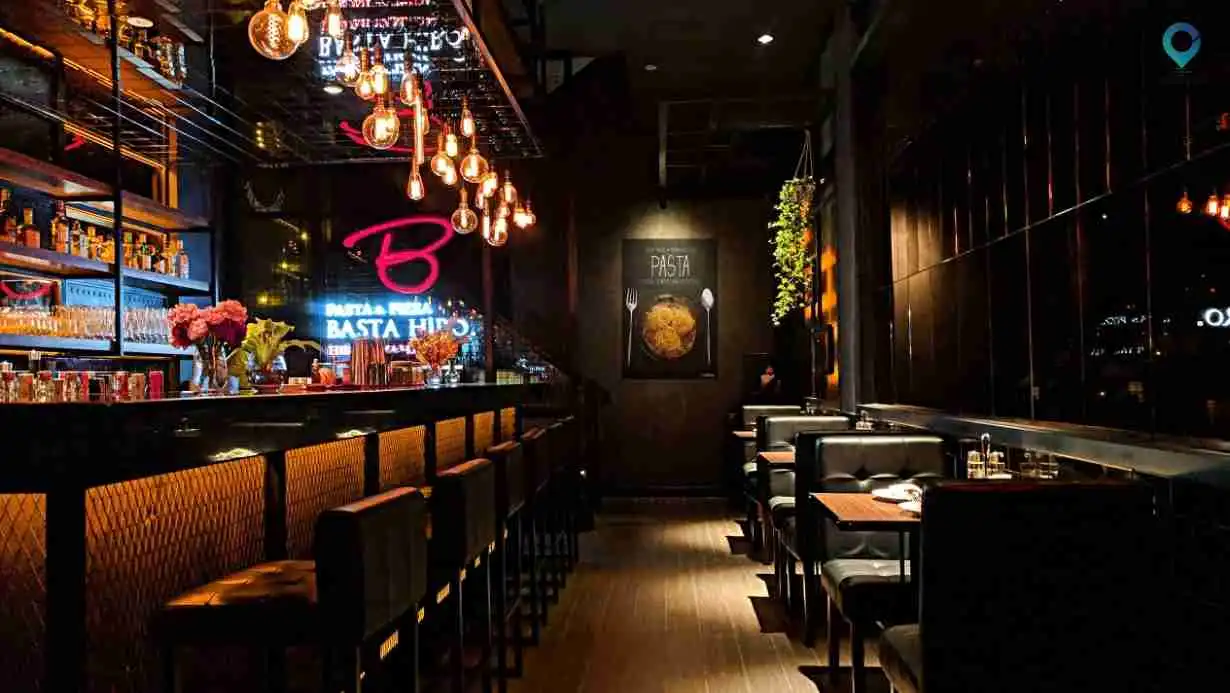
London is a melting pot of international cuisines, but it’s also the perfect place to sample traditional British dishes. In this section, we’ll provide recommendations for trying British cuisine and tips for finding great places to eat.
Recommendations for Trying British Cuisine
British cuisine has a rich history and offers a variety of hearty and comforting dishes. Don’t leave London without trying these classic British foods:
- Fish and Chips: This quintessential British meal consists of battered and fried fish served with thick-cut chips (fries). Try it at a traditional chippy for an authentic experience.
- Full English Breakfast: A hearty breakfast that includes eggs, bacon, sausages, baked beans, tomatoes, mushrooms, and toast. Many cafes and restaurants offer their own take on this classic.
- Roast Dinner: Sunday roast is a cherished tradition, with roast meats, Yorkshire pudding, roast potatoes, and a variety of vegetables. Many pubs serve excellent Sunday roasts.
- Pie and Mash: Traditional meat pies, often filled with steak or minced beef, served with mashed potatoes and a generous helping of gravy.
- Ploughman’s Lunch: A classic British pub lunch featuring a selection of cheeses, cold meats, pickles, and fresh bread.
- Afternoon Tea: Enjoy a quintessential afternoon tea experience with scones, clotted cream, finger sandwiches, and an array of pastries and cakes.
- Black Pudding: A blood sausage that’s often served as part of a traditional English breakfast. It’s an acquired taste, but many find it delicious.
- Potted Shrimp: A classic British seafood dish where shrimp are cooked in spiced butter and served in a pot.
- Bangers and Mash: Sausages served with mashed potatoes and onion gravy, a comforting and simple dish.
Tips for Finding Great Places to Eat
- Local Pubs: British pubs often serve classic dishes and are great places to sample British cuisine. Look for pubs with good reviews.
- Markets: Visit food markets like Borough Market or Camden Market to sample a variety of street food and local specialties.
- Online Reviews: Use websites and apps like TripAdvisor or Yelp to read reviews and find highly-rated restaurants and eateries.
- Ask Locals: Don’t hesitate to ask locals for their restaurant recommendations. They often know the best-hidden gems.
- Reservations: For popular restaurants, make reservations in advance to secure your table, especially for dinner.
- Explore Ethnic Cuisines: London is a diverse city with a wide range of international cuisines. Don’t hesitate to explore foods from around the world.
- Food Tours: Join a food tour to explore the city’s culinary delights and get insider recommendations from local guides.
- Budget and Luxury Dining: London caters to all budgets. You can find affordable street food as well as Michelin-starred restaurants.
- Brunch Spots: London is known for its brunch scene, with many cafes and restaurants offering delicious mid-morning options.
- Book a Themed Dinner: Consider booking a themed dinner experience, such as dining on a historic London bus or enjoying a murder mystery dinner.
- Check for Specials: Some restaurants offer special deals or set menus, which can be a cost-effective way to dine out.
Whether you’re an adventurous foodie looking to try new dishes or you prefer the comfort of traditional British fare, London’s food scene has something for everyone. Use these tips to explore and savor the city’s culinary delights.
7. Shopping

London is a shopper’s paradise, offering a wide range of shopping experiences, from luxury designer boutiques to quirky markets. In this section, we’ll discuss London’s top shopping districts and provide tips for finding unique souvenirs.
London’s Shopping Districts
London boasts several renowned shopping districts, each with its own unique character and offerings. Here are some of the top areas to explore:
- Oxford Street: Known for its extensive shopping options, Oxford Street is home to major department stores like Selfridges and iconic brands. It’s a must-visit for fashion enthusiasts.
- Regent Street: Adjacent to Oxford Street, Regent Street offers a mix of high-end fashion boutiques, including Hamleys, one of the world’s oldest toy stores.
- Bond Street: For luxury shopping, Bond Street is the place to be. It’s renowned for high-end designer brands and upscale jewelry shops.
- Covent Garden: A lively area filled with boutique shops, independent designers, and unique finds. The Apple Market is a great place to pick up handmade crafts and antiques.
- Carnaby Street: Known for its trendy and independent boutiques, Carnaby Street is a hub for fashion-forward shopping.
- Knightsbridge: Home to Harrods, one of the world’s most famous department stores, Knightsbridge is an upscale shopping destination.
- Westfield London: Located in White City and Stratford, Westfield offers a massive shopping experience with a wide range of brands and dining options.
- Portobello Road Market: This colorful market in Notting Hill is famous for antiques, vintage clothing, and eclectic items.
- Camden Market: A vibrant market in North London offering a mix of alternative fashion, vintage clothing, crafts, and street food.
- Borough Market: A food lover’s paradise, Borough Market features artisanal food and drink from local producers.
Tips for Finding Unique Souvenirs
- Markets: Explore London’s markets for unique and handcrafted souvenirs. Look for vintage items, crafts, and artwork.
- Independent Boutiques: Seek out independent boutiques and artisan shops for one-of-a-kind items that reflect local craftsmanship.
- Personalized Gifts: Consider getting personalized or custom-made souvenirs, such as engraved jewelry or bespoke clothing.
- Antiques and Vintage Stores: London has a wealth of antique shops and vintage stores where you can discover unique collectibles and retro fashion.
- Local Art Galleries: Support local artists by purchasing artwork or prints from London’s many galleries.
- British Food and Drink: Bring back British flavors by purchasing tea, biscuits, jams, or local spirits.
- Museums and Cultural Centers: Museum gift shops often offer culturally significant souvenirs related to their collections.
- Themed Souvenirs: Look for souvenirs that reflect London’s iconic symbols, such as red telephone boxes, double-decker buses, and Big Ben.
- Handmade Crafts: Find handcrafted goods at markets and artisan fairs, such as pottery, textiles, and jewelry.
- Books and Literature: London is a literary hub, so consider picking up books or literary-themed souvenirs from bookshops or the British Library.
Shopping in London is not just about buying items; it’s an experience in itself. Whether you’re looking for trendy fashion, unique artwork, or artisanal food, London offers a plethora of opportunities to find memorable souvenirs that will remind you of your trip to this dynamic city.
8. Safety and Health
London is generally a safe city for travelers, but like any major urban area, it’s important to be aware of your surroundings and take precautions. In this section, we’ll provide advice on managing health and emergencies and offer tips for staying safe while traveling in London.
Advice on Managing Health and Emergencies
- Travel Insurance: Before your trip, make sure you have comprehensive travel insurance that covers medical emergencies, trip cancellations, and lost belongings.
- Emergency Numbers: Memorize or save important phone numbers, including the local emergency number (999), the non-emergency police line (101), and the contact information for your country’s embassy or consulate in London.
- Healthcare Services: London has an excellent healthcare system. If you require medical attention, visit a National Health Service (NHS) walk-in center or a nearby hospital.
- Prescriptions: If you take prescription medication, ensure you have an ample supply for your trip and carry a copy of your prescription. Pharmacies, known as chemists in the UK, are widely available.
- Health Precautions: Be mindful of your health by drinking bottled water, practicing good hygiene, and taking necessary precautions to avoid illness.
- Vaccinations: Check if any vaccinations or health precautions are recommended before traveling to London, based on your home country’s guidelines.
- Travel Health Kit: Pack a small travel health kit with essential items such as first-aid supplies, any necessary medications, insect repellent, and sunscreen.
Tips for Staying Safe While Traveling in London
- Secure Your Belongings: Be cautious with your belongings, especially in crowded areas and on public transport. Use anti-theft bags and keep your valuables secure.
- Stay Aware: Be aware of your surroundings, and avoid displaying expensive items like jewelry or electronics in public places.
- Travel with Reputable Companies: When booking tours or transportation services, choose reputable companies with positive reviews and established track records.
- Public Transport Safety: Public transport in London is generally safe, but be alert during busy hours, and avoid empty carriages late at night.
- Avoid Street Scams: Be cautious of street performers and people asking for money, especially around popular tourist spots. Don’t engage with aggressive street sellers.
- Use ATMs Wisely: When using ATMs, opt for machines in well-lit, secure locations, and be discreet when handling cash.
- Respect Local Laws: Familiarize yourself with local laws and customs. Some behaviors or activities that are legal in your home country may be prohibited in the UK.
- Travel with a Buddy: If possible, travel with a friend or family member, especially in the evening or in less crowded areas.
- Emergency Apps: Download emergency and safety apps on your smartphone, which can provide helpful information and assistance in case of need.
- Stay in Well-Lit Areas: When walking at night, stay in well-lit and busy areas. Avoid shortcuts through dark alleys or parks.
- Avoid Overindulgence: While enjoying London’s nightlife, remember to drink responsibly and keep an eye on your drinks.
- Stay Informed: Stay informed about local news and any potential safety concerns during your stay.
- Cultural Sensitivity: Be respectful of local customs and etiquette. London is a diverse city, so it’s important to be culturally sensitive and considerate of others.
Your safety and well-being are top priorities during your trip to London. By following these safety and health guidelines, you can have a secure and enjoyable visit to this dynamic and welcoming city.
9. Local Etiquette
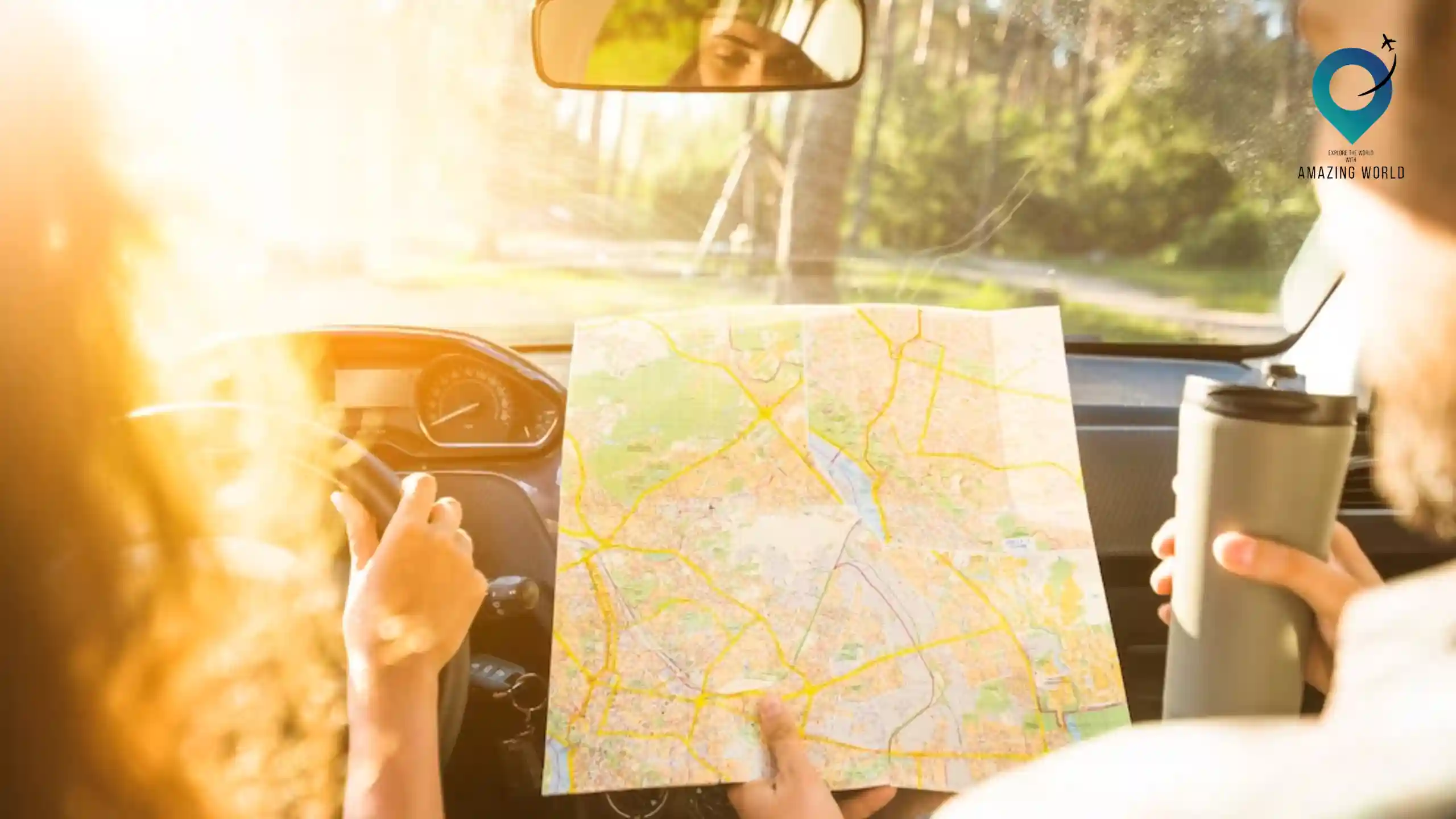
Understanding and respecting local etiquette is essential to have a positive and culturally enriching experience in London. In this section, we’ll highlight insights into British etiquette and customs and provide tips for polite behavior while in London.
Insights into British Etiquette and Customs
- Queuing (Standing in Line): The British take queuing very seriously. Always join the end of a line and wait your turn, whether it’s for public transport, shops, or attractions.
- Politeness: British people are known for their politeness. Common courtesies like saying “please” and “thank you” go a long way in social interactions.
- Tipping: Tipping is customary in restaurants and cafes, and it’s usually around 10-15% of the bill. Tipping is also common for services like taxis, hotels, and tour guides.
- Punctuality: Being on time is highly valued. If you have an appointment, meeting, or tour, make an effort to arrive punctually.
- Personal Space: Respect personal space, especially in crowded places like public transport. Avoid standing too close to others and maintain a comfortable distance.
- Quiet Zones: Some public spaces and transportation areas may have designated “quiet zones” where talking loudly on phones or having loud conversations is discouraged.
- Table Manners: When dining, follow basic table manners, such as not placing elbows on the table and waiting for everyone to be served before starting your meal.
- Royal Family: The British royal family is highly respected. Avoid making negative comments or jokes about them.
- Currency and Money: Handle money discreetly, and avoid counting it in public places. Use credit cards or contactless payments for transactions when possible.
- Crossing the Road: Always use designated pedestrian crossings and obey traffic signals when crossing the road.
Budgeting and Money
Managing your expenses in London is crucial to ensuring a cost-effective and enjoyable trip. Here are some tips for budgeting and handling money while in the city:
- Currency: The currency used in the UK is the British Pound Sterling (GBP). Familiarize yourself with the current exchange rates.
- ATMs: ATMs are widely available in London. Using them to withdraw cash is convenient, but be mindful of any associated fees. Make sure to use secure and well-lit ATMs.
- Credit Cards: Credit cards are widely accepted in London. Visa and Mastercard are commonly used, but it’s a good idea to inform your bank of your travel plans to avoid any unexpected card issues.
- Contactless Payment: London has a comprehensive contactless payment system. You can use contactless credit and debit cards, as well as mobile payment options like Apple Pay and Google Pay for most transactions.
- Budget Accommodations: Consider staying in budget-friendly accommodations like hostels or guesthouses, especially if you’re traveling on a limited budget.
- Free Attractions: London offers many free attractions, including museums and parks. Take advantage of these to balance your expenses.
- Discount Cards: Explore options like the London Pass, which can offer discounts on attractions and transportation.
- Local Markets: Visit local markets for affordable shopping and street food, where you can experience a wide variety of culinary delights without breaking the bank.
- Pre-book Tickets: Booking tickets for attractions, transport, and events in advance can often save you money compared to purchasing them on the spot.
- Budget Dining: Look for affordable dining options in cafes, street food stalls, and local eateries. Try the “meal deal” offers in supermarkets for cost-effective lunches.
- Plan Your Transportation: Use Oyster cards, contactless payment methods, and travel passes to make your transportation more economical.
- Monitor Your Expenses: Keep track of your spending by using budgeting apps or keeping a travel journal. This helps you stay within your financial limits.
By adhering to local etiquette, managing your budget effectively, and being mindful of how you handle money, you can ensure a smooth and cost-effective journey in London while respecting the local customs and social norms.
10. Communication
Effective communication is essential when navigating a foreign city like London. In this section, we’ll explain local SIM cards and communication options and provide tips for staying connected with family and friends while in London.
Explain Local SIM Cards and Communication Options
- Local SIM Cards: Purchasing a local SIM card can be a cost-effective way to stay connected during your stay in London. You’ll have access to a UK phone number and data for calls, texts, and internet usage.
- Mobile Networks: Several mobile networks operate in the UK, including EE, O2, Vodafone, and Three. Research their coverage and available plans to find the best fit for your needs.
- SIM Card Purchase: You can buy local SIM cards at airports, convenience stores, or mobile network shops. Make sure your phone is unlocked and compatible with UK networks.
- Pay-As-You-Go (PAYG) Plans: Consider a pay-as-you-go plan, which allows you to top up your phone with credit and use it as needed, without a long-term contract.
- Wi-Fi: Many cafes, restaurants, hotels, and public spaces in London offer free Wi-Fi. It’s a convenient way to stay connected without using cellular data.
- Data Roaming: Check with your home mobile provider about international data roaming fees. Some providers offer affordable roaming options.
Tips for Staying Connected
- Stay in Touch with Home: Let family and friends know your itinerary and share your contact details, including your local phone number, so they can reach you in case of emergencies.
- Messaging Apps: Download messaging apps like WhatsApp, Facebook Messenger, or Skype to make free or low-cost calls and send messages over Wi-Fi.
- Emergency Contacts: Save emergency contact numbers in your phone, including the local emergency services (999), your country’s embassy or consulate, and your travel insurance provider.
- Offline Maps: Download offline maps on your smartphone before your trip. They can be a lifesaver when you don’t have an internet connection.
- Free City Wi-Fi: Look for free public Wi-Fi services provided by the city. Some areas offer Wi-Fi hotspots, but be cautious when connecting to open networks.
- Global Roaming: If your phone plan includes global roaming, consider using it sparingly to avoid excessive charges.
- Purchase a Travel SIM Card: In addition to a local SIM card, you can also consider purchasing a travel SIM card that offers international roaming coverage for multiple countries.
- International Calling Cards: If you need to make international calls, consider using prepaid international calling cards, which can be found in many convenience stores.
- Emergency Services: Familiarize yourself with the emergency services in the UK. Dial 999 for police, fire, and medical emergencies.
Staying connected is essential while traveling in London, whether for safety, convenience, or simply sharing your experiences with loved ones. By using local SIM cards, Wi-Fi, and communication apps, you can ensure seamless communication during your stay in this vibrant city.
11. Day Trips and Excursions
While London has an abundance of attractions and activities to keep you entertained, it’s also an excellent base for exploring the surrounding regions. In this section, we’ll suggest nearby destinations worth visiting and offer tips for planning day trips from London.
Suggest Nearby Destinations Worth Visiting
- Oxford: Known for its prestigious university and historic architecture, Oxford is just a short train ride away. Explore the charming colleges, museums, and the beautiful Bodleian Library.
- Cambridge: Another famous university town, Cambridge boasts picturesque colleges, punting on the River Cam, and the striking King’s College Chapel.
- Windsor: Visit Windsor Castle, the oldest and largest occupied castle in the world. It’s an easy day trip from London and offers a glimpse into royal life.
- Bath: Known for its Roman baths, Georgian architecture, and the stunning Bath Abbey, Bath is a UNESCO World Heritage Site. Don’t miss the Roman Baths and the Thermae Bath Spa.
- Stratford-upon-Avon: Explore the birthplace of William Shakespeare and discover his legacy at Shakespeare’s Birthplace, Anne Hathaway’s Cottage, and the Royal Shakespeare Theatre.
- Stonehenge: A mysterious and iconic prehistoric monument, Stonehenge is a must-visit. It’s about a two-hour drive from London, and guided tours are available.
- Canterbury: Known for its historic cathedral and medieval architecture, Canterbury offers a glimpse into England’s religious history.
- Brighton: Enjoy a day at the seaside in Brighton, known for its vibrant culture, pebble beaches, the iconic Brighton Pier, and the Royal Pavilion.
- Harry Potter Studio Tour: For fans of the wizarding world, a trip to the Warner Bros. Harry Potter Studio in Leavesden is a magical experience.
- Dover: Explore Dover Castle, the White Cliffs of Dover, and the secret wartime tunnels that played a crucial role in World War II.
- Greenwich: Visit the Royal Observatory, the historic Cutty Sark ship, and the beautiful Greenwich Park, all set against the backdrop of maritime history.
Tips for Planning Day Trips from London
- Plan Ahead: Research the destinations and plan your day trips. Consider transportation options, opening hours, and any specific attractions you’d like to visit.
- Train Travel: The UK’s extensive rail network makes train travel convenient for day trips. Check train schedules and book tickets in advance for the best fares.
- Guided Tours: If you prefer a guided experience, consider joining organized day tours that provide transportation and expert guides.
- Check Opening Hours: Make sure to check the opening and closing times of the attractions you plan to visit, as they may vary.
- Travel Light: Pack essentials for the day, but avoid carrying heavy bags. Comfortable walking shoes and weather-appropriate clothing are crucial.
- Local Cuisine: Try local cuisine in the destination you’re visiting. Each of these day trip locations has its own unique food culture.
- Travel Passes: Some destinations offer travel passes that provide access to multiple attractions at a discounted price. Look for these options when planning your day trips.
- Return Timings: Pay attention to the last return train or transportation options to ensure you can get back to London without any issues.
Day trips from London allow you to explore the diverse landscapes, histories, and cultures that the United Kingdom has to offer. By following these tips and planning your excursions carefully, you can make the most of your time and create unforgettable memories beyond the city limits.
12. Nightlife and Entertainment

London’s nightlife is as diverse as the city itself, offering something for everyone. In this section, we’ll describe the vibrant nightlife in London and provide tips for enjoying evenings in the city.
Vibrant Nightlife in London
- The West End: London’s West End is famous for its theaters, and catching a world-class show is a quintessential evening experience. From musicals to plays, there’s something for every theater enthusiast.
- Pubs and Bars: London is dotted with traditional pubs and contemporary bars. Enjoy a pint of British ale or explore the city’s craft beer scene. Many bars offer signature cocktails and live music.
- Clubs and Dance Floors: London’s club scene is renowned. The city hosts an array of clubs playing different genres of music, from electronic and hip-hop to house and rock.
- Live Music: London has a thriving live music scene. Attend concerts at iconic venues like the O2 Arena, Brixton Academy, and the Royal Albert Hall.
- Comedy Shows: If you enjoy laughter, visit comedy clubs around the city. London has a rich tradition of comedy and stand-up performances.
- Late-Night Dining: Satisfy your post-night out cravings with late-night dining options. Some venues serve food into the early hours of the morning.
- Rooftop Bars: Enjoy stunning views of London’s skyline from rooftop bars that offer a unique perspective of the city at night.
- Casinos and Gaming: For those who enjoy a bit of gambling, London has several casinos and gaming establishments.
Tips for Enjoying Evenings in the City
- Plan Ahead: Check event listings and book tickets for shows, clubs, or concerts in advance. Popular venues may sell out quickly.
- Dress Code: Some clubs and high-end bars have dress codes, so dress appropriately for the venue you plan to visit.
- Public Transport: Familiarize yourself with public transportation options for getting back to your accommodation after a night out.
- Stay Safe: As with any nightlife scene, be aware of your surroundings, drink responsibly, and travel in groups when possible.
- Local Recommendations: Ask locals or consult with your hotel staff for recommendations on the latest and greatest spots for a night out.
- Explore Different Areas: London has diverse neighborhoods, each offering a unique nightlife experience. From Shoreditch to Soho, explore different areas to find the atmosphere that suits you best.
13. Packing Tips

Advice on What to Pack for Your London Trip
- Weather-Appropriate Clothing: London weather can be unpredictable, so pack layers, including a waterproof jacket and comfortable walking shoes.
- Electrical Adapters: Don’t forget to bring the right electrical adapters if you’re traveling from a country with a different plug type.
- Travel Documents: Ensure you have your passport, visas (if required), travel insurance, and copies of important documents in a secure travel wallet.
- Currency: Bring some British Pounds in cash for initial expenses, but rely on cards for most transactions.
- Medications: Pack any prescription medications you need, along with a basic travel health kit.
- Travel Apps: Download useful travel apps, such as maps, transportation apps, and translation tools, to assist you during your trip.
- Reusable Water Bottle: London tap water is safe to drink, so carry a reusable water bottle to stay hydrated and reduce plastic waste.
- Travel Lock: Use a TSA-approved travel lock to secure your luggage and belongings.
- Backpack or Day Bag: A lightweight backpack or day bag is handy for carrying essentials during your day trips and exploring the city.
- Travel Guides: Consider bringing a travel guidebook or using travel guide apps to enhance your trip planning and navigation.
Accessibility and Special Considerations
- Accessible Attractions: Many London attractions are wheelchair accessible, and some offer concessions for visitors with disabilities. Check the accessibility information on attraction websites.
- Public Transportation: London has accessible public transport options, including buses and stations with step-free access and assistance for travelers with disabilities.
- Assistance Animals: Service animals are generally welcome in London, but it’s a good practice to notify venues in advance if you plan to bring one.
- Accessible Accommodation: Look for hotels and accommodations with accessible rooms and facilities to ensure a comfortable stay.
- Special Dietary Needs: London caters to various dietary preferences and restrictions, with many restaurants offering vegan, gluten-free, and other special dietary options.
- Language Services: If you require language translation or sign language services, it’s advisable to make arrangements in advance.
- Transportation Assistance: When using public transport, make use of available assistance and accessible services, such as ramps and designated seating areas.
- Emergency Services: Familiarize yourself with local emergency services and contacts for assistance in case of special needs or medical emergencies.
14. Local Transportation Hacks
Getting around London efficiently is crucial for maximizing your time in the city. In this section, we’ll share tips for using the Oyster card and travel passes, as well as how to navigate London like a local.
Share Tips for Using the Oyster Card and Travel Passes
- Oyster Card: The Oyster card is a convenient and cost-effective way to pay for travel on public transportation in London, including buses, trams, the Underground, the DLR, London Overground, and some National Rail services within London. Here’s how to make the most of it:
- Top Up in Advance: Load credit onto your Oyster card before your trip to avoid long queues at ticket machines. You can also set up online top-ups.
- Contactless Payment: If you have a contactless credit or debit card, you can use it for travel in London, which works similarly to the Oyster card.
- Daily Cap: Travel in London is capped, which means that once you’ve spent a certain amount in a day (equivalent to a Travelcard price), you won’t be charged for additional journeys on the same day.
- Off-Peak Travel: If possible, travel during off-peak hours (outside of the morning and evening rush) to save on fares.
- Travel Passes: London offers various travel passes, such as the Travelcard and Visitor Oyster card, which provide unlimited travel within certain zones for a set duration. Choose the pass that best suits your travel needs.
- Travel Zones: London is divided into zones, with Zone 1 being the city center. Understanding which zones you’ll be traveling in can help you choose the right pass.
- Online Account: Register your Oyster card or contactless card online to track your journey history and protect your balance in case of loss or theft.
How to Navigate London Like a Local
- Walking: London is a walkable city, and you’ll discover many hidden gems on foot. Use walking as a means to explore neighborhoods and experience the city’s charm up close.
- Biking: London has a growing network of cycle lanes and bike-sharing schemes. Consider renting a bike to navigate the city at your own pace.
- Public Transport Apps: Download public transport apps like TfL’s (Transport for London) official app to access real-time information, maps, and journey planners.
- Tube Map Apps: Use Tube map apps that offer detailed information about London’s Underground system, including service updates, station facilities, and line statuses.
- Hop-on Hop-off Buses: Explore the city on a hop-on hop-off bus tour, which allows you to visit major attractions at your own pace.
- River Transport: London’s river bus services are a unique way to see the city from the water. Consider taking a river cruise along the Thames.
- Travel Smart: Check travel alerts and updates before heading out. London’s transportation systems are well-connected, but occasional disruptions may occur.
- Avoid Peak Hours: If you can, avoid using public transport during the morning and evening rush hours to experience a more comfortable journey.
- Use Contactless Payments: As mentioned earlier, using contactless payments or mobile payment apps can make your commute seamless and efficient.
- Travel Light: Avoid carrying bulky luggage during your daily outings. If you need to store luggage, many major train stations and airports offer storage services.
By utilizing local transportation hacks and adopting a “travel like a local” mindset, you’ll not only save time and money but also experience the city more authentically. London’s efficient public transport system makes it easy to explore the city like a seasoned local.
15. Weather Considerations
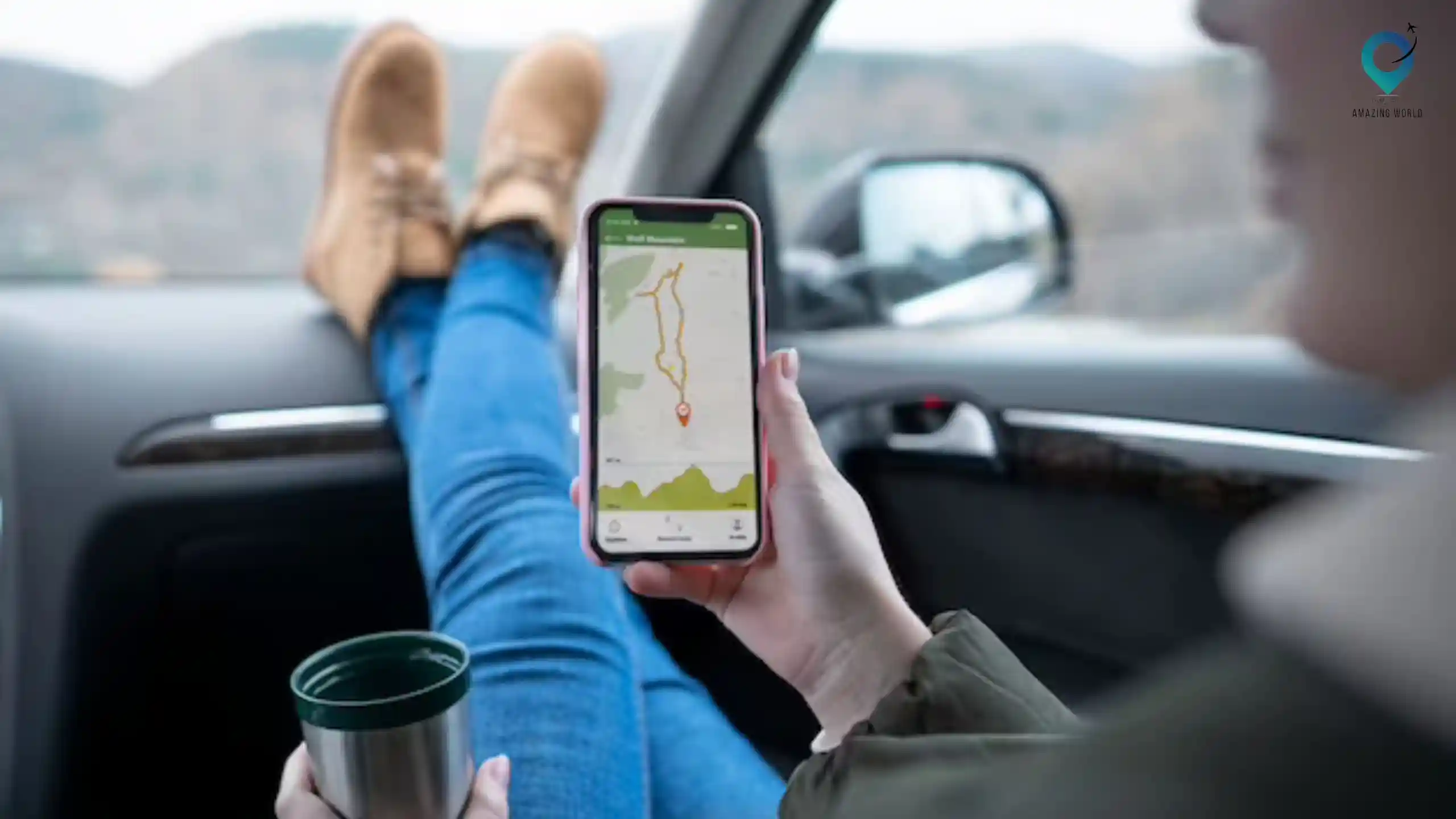
The weather in London can be unpredictable, so being prepared for different conditions is essential for a comfortable trip. In this section, we’ll discuss the ever-changing London weather and offer tips for dressing appropriately for the season.
About Ever-Changing London Weather
- Variable Conditions: London’s weather can be quite changeable. It’s not unusual to experience sun, rain, and overcast skies all in one day.
- Seasonal Variations: London experiences all four seasons, with summer (June to August) generally being warm, and winter (December to February) being cold and damp. Spring and autumn offer milder temperatures.
- Rainy Days: London is known for its occasional rainfall, so be prepared for wet weather. Carry an umbrella or invest in a waterproof jacket.
- Sun Protection: During the summer, the sun can be intense, so don’t forget to wear sunscreen, sunglasses, and a hat to protect yourself from UV rays.
Tips for Dressing Appropriately for the Season
- Summer: In summer, wear lightweight clothing, sunglasses, and comfortable shoes for long walks. Bring a compact umbrella or raincoat for unexpected showers. Don’t forget sunscreen and a refillable water bottle to stay hydrated.
- Autumn: Layer your clothing to adapt to varying temperatures. A light jacket and an umbrella are handy for sudden rain showers. Consider packing a warm scarf and gloves toward the end of autumn.
- Winter: Winter in London can be chilly and damp. Bring a warm coat, gloves, and a hat. Layering is key, as indoor venues are often heated. Comfortable waterproof shoes or boots are essential for navigating wet streets.
- Spring: Spring can be a mix of sunny and showery days. A waterproof jacket or an umbrella is useful. Opt for layers and comfortable walking shoes for exploring parks and gardens.
- Check the Forecast: Before heading out for the day, check the weather forecast to help you decide on appropriate clothing and accessories.
- Local Shops: If you find yourself underdressed for the weather, London has many shops where you can purchase clothing and accessories to suit the conditions.
- Be Prepared: Carry a small backpack or day bag to store extra layers, an umbrella, and any items you may need for changing weather conditions.
- Adapt to Indoor Heating: Many indoor locations, including museums and restaurants, are heated during colder months. Dress in layers to accommodate temperature changes.
- Sun Safety: When the sun is shining, protect your skin from UV rays by applying sunscreen, especially if you plan to spend time outdoors.
By keeping an eye on the weather and dressing appropriately for the season, you’ll be better prepared to enjoy your time in London, regardless of the ever-changing conditions. Being adaptable and having the right clothing and accessories can enhance your overall travel experience.
16. Resources and Further Reading
- Official London Websites: Explore official London tourism websites, such as Visit London (https://www.visitlondon.com/) and Transport for London (tfl.gov.uk), for the latest information on attractions, transportation, and events.
- Travel Guidebooks: Consider investing in travel guidebooks that provide in-depth information on London’s history, culture, attractions, and practical tips. Some popular options include those from Lonely Planet, DK Eyewitness, and Rick Steves.
- Online Travel Forums: Connect with fellow travelers and seek advice on forums like TripAdvisor, Reddit’s travel subreddits, and travel-specific Facebook groups.
- Mobile Apps: Download useful travel apps that offer real-time information on public transportation, maps, weather, translation, and city guides.
- Local News and Events: Keep an eye on local news and event listings to discover special festivals, exhibitions, and cultural events happening during your visit.
- Blogs and Travel Journals: Read blogs and travel journals from individuals who have explored London. Their personal experiences and insights can provide valuable tips and recommendations.
- Social Media: Follow London-related accounts on social media platforms like Instagram, Twitter, and Facebook to stay updated on the city’s latest trends and attractions.
- Library and Bookstores: Visit your local library or bookstore to browse travel books, history books, and fiction set in London to get a deeper understanding of the city.
- Language Apps: Brush up on basic phrases in British English using language apps like Duolingo or Babbel to enhance your communication skills.
- Local Services: Explore services and activities available in London, such as guided tours, river cruises, and walking tours, to further enrich your experience.
- Cultural Guides: If you’re interested in specific cultural experiences, look for guides or resources related to theater productions, art exhibitions, and musical performances.
- Photography and Video: Watch videos and view photo galleries to get a visual sense of the city and its attractions before your trip.
- History and Culture: Delve into books and documentaries about London’s rich history, cultural diversity, and landmarks to gain a deeper appreciation for the city.
- Cooking and Cuisine: Learn about British cuisine and try your hand at cooking traditional dishes with recipe books or cooking classes in London.
- Travel Agencies: If you prefer a more organized approach, consider consulting with travel agencies that specialize in London tours and travel packages.
London is a city of endless possibilities, and the more resources and information you gather, the better prepared you’ll be to make the most of your journey. Whether you’re interested in history, culture, cuisine, or entertainment, there’s a wealth of knowledge available to enhance your London adventure.
17. Local Insights and Hidden Gems
London is a city that thrives on local culture and secrets waiting to be discovered. In this section, we’ll share local insights and hidden gems that will add a unique touch to your London experience.
- Secret Gardens: Explore London’s hidden green spaces, such as Postman’s Park, a tranquil escape from the city’s hustle and bustle, and Kyoto Garden in Holland Park, a serene Japanese garden.
- Street Art: London is a hub for street art, especially in neighborhoods like Shoreditch and Camden. Take a walking tour to discover vibrant murals and graffiti art.
- Mews Streets: Stumble upon charming mews streets in areas like South Kensington and Notting Hill. These picturesque cobblestone lanes lined with colorful houses are quintessentially London.
- Local Pubs: Seek out traditional and historic pubs off the beaten path, where you can mingle with locals and savor a pint in an authentic setting.
- Local Markets: Beyond the famous markets, like Borough Market and Camden Market, explore smaller markets, such as Maltby Street Market, where you can sample gourmet street food.
- Historic Bookshops: Delve into the world of literature at historic bookshops like Daunt Books and Hatchards, which offer a unique atmosphere for book lovers.
- Little Venice: Discover the serene canal networks of Little Venice, a hidden gem where you can take a canal boat ride or enjoy a peaceful walk along the water.
- Village Atmospheres: Visit London’s “villages” within the city, such as Hampstead, with its charming streets, or Dulwich, known for its art galleries and parks.
18. Local Transportation Hacks
- Walking Apps: Download walking apps and self-guided walking tour routes to uncover the city’s hidden treasures on foot.
- Night Buses: London’s night buses are an affordable way to get around after the Underground closes for the night. Check the night bus routes to plan your late-night journeys.
- Bike Rentals: Utilize bike rental services like Santander Cycles for a cost-effective and eco-friendly way to explore the city.
- Rush Hour Avoidance: If you must travel during rush hours, remember that trains are generally less crowded in the middle carriages, and buses at the back tend to be less packed.
19. Weather Considerations
- Weather Apps: Install weather apps to receive up-to-date forecasts and rain notifications, which can help you make on-the-go decisions during your stay.
- Indoor Attractions: On rainy days, head to London’s world-class museums and galleries, such as the British Museum, the National Gallery, and the Victoria and Albert Museum.
- Seasonal Events: Check for seasonal events and festivals that coincide with your visit, like the famous Notting Hill Carnival in August or the festive Christmas markets in December.
20. Final Thoughts
- Create Your London Experience: London is a city that invites you to shape your own experience. Whether you’re an art enthusiast, history buff, foodie, or simply an explorer, London has something for everyone.
- Embrace the Diversity: Celebrate London’s diversity and embrace the eclectic mix of cultures, languages, and traditions you’ll encounter during your journey.
- Stay Curious: London is a city of constant discovery. Stay curious, explore beyond the usual tourist spots, and allow yourself to be captivated by the surprises that await around every corner.
- Make Memories: Ultimately, your London adventure is about making lasting memories. Capture the moments, savor the cuisine, and immerse yourself in the rich tapestry of this magnificent city.
How much did you like Our detailed London Travel Guide: Essential Tips for First-Timers in London, please share these Blogs with your friends on social media.
Recommended

Meet David Hoper, a passionate travel Blog writer with 7+ years of experience in travel content. Through his exemplary storytelling and engaging narratives, he shares his experiences and brings destinations to life. With a keen eye for detail and a love for exploration, he has cultivated a diverse portfolio of travel blogs that inspire and inform readers worldwide.







